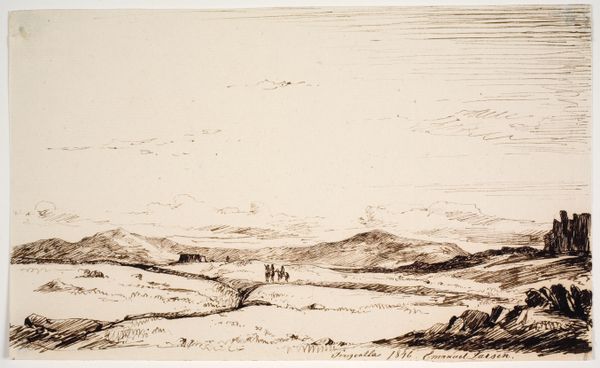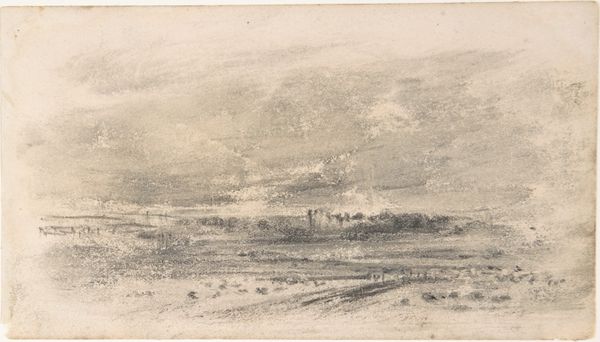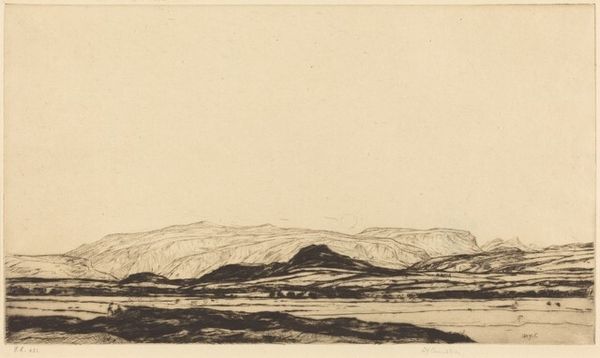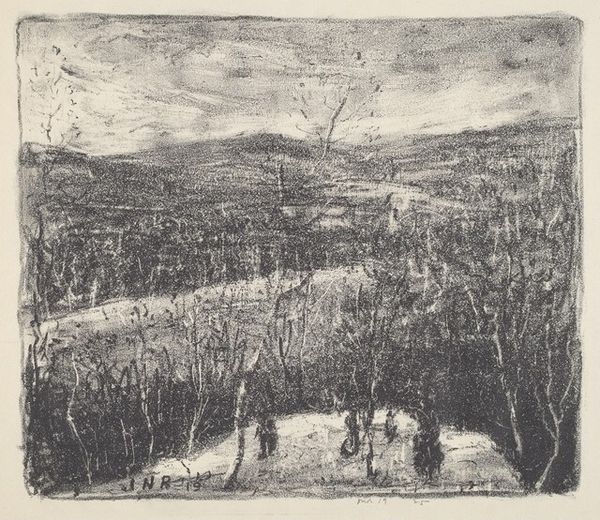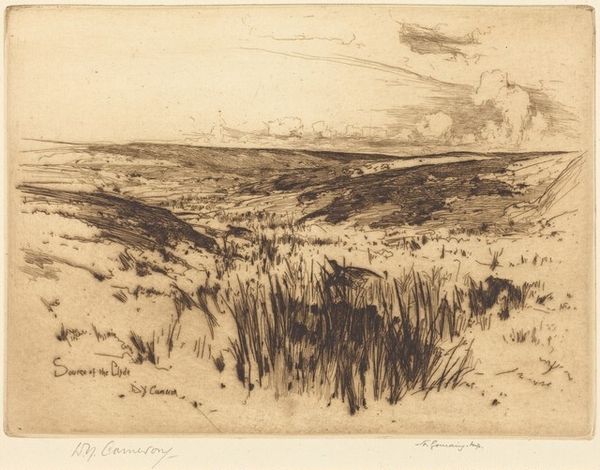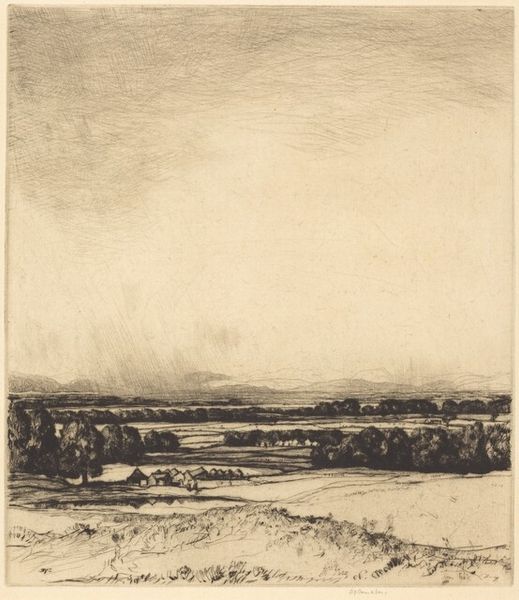
print, etching
# print
#
etching
#
landscape
#
etching
#
realism
Copyright: National Gallery of Art: CC0 1.0
David Young Cameron made this etching, Upper Clyde Valley, using a metal plate, acid, and ink. The technique involves drawing an image into a prepared ground, then immersing the plate in acid, which bites away the exposed lines. The plate is then inked, and the surface wiped clean, leaving ink only in the etched lines. Finally, paper is pressed against the plate, transferring the image. The dense lines create a sense of atmospheric perspective and emphasize the industrial presence in the landscape. The etching is made up of tiny individual marks, an accumulation of labor. The industrial scene in the valley is shown with a neutral, documentary gaze. The Clyde Valley, in west-central Scotland, was a powerhouse of shipbuilding and manufacturing in Cameron's time. By focusing on the marks, the image reminds us of its status as a made thing, and of the artist's labor, even while depicting other forms of labor in the valley below. In this way, the print blurs the lines between representation and materiality, art and industry.
Comments
No comments
Be the first to comment and join the conversation on the ultimate creative platform.



